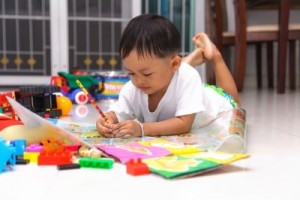What’s on the Walls?
 For those of you who are deciding upon a preschool placement for your twins, I want to share this beautiful article about what to look for when you visit different locations. Susan North, the author of this blog, is a parent educator who specializes in modeling mediation techniques and language to mitigate and manage conflict between children and their siblings, friends, and parents. The article was originally posted on her blog page and is reprinted here with permission.
For those of you who are deciding upon a preschool placement for your twins, I want to share this beautiful article about what to look for when you visit different locations. Susan North, the author of this blog, is a parent educator who specializes in modeling mediation techniques and language to mitigate and manage conflict between children and their siblings, friends, and parents. The article was originally posted on her blog page and is reprinted here with permission.
February 3, 2016
Choosing a Preschool: Having a Look Around
Recently I chuckled over a New Yorker cartoon featuring an urban couple fretting over whether they had chosen the right dog park for their pooch. I get it, parents do agonize over where to send their young children to school, often to the point of overthinking it. But when you’re in the middle of the search, it does feel like a fateful decision. And it is—choosing where your small child is going to spend his/her days is a very big deal.
I can’t tell you where to send your child but I can provide a few ideas to mull over while you’re choosing. This post will focus on what to look for (and ask about) when you’re touring. My next post will be about deciding.
First, start early. Parents say, “He’s only six months old. How in the world do I know what preschool is best for him?” Exactly. If you apply to a number of them now, by the time he is age-ready you will have a few good choices to consider in light of a much better-developed sense of who your child is. By the way, don’t get hung up on terms like “preschool,” “pre-k,” “child care” or “nursery school.” The terms are often used interchangeably. I’ve seen so-called “schools” that weren’t much more than babysitting and I’ve seen home-based “day cares” that were highly nurturing and educational.
Look for a place that is child-centered. This doesn’t mean the kids are running the show. It means that the materials in the environment, the schedule, and the expectations are age-appropriate. Kids should have ample time to be physically active, make choices, develop play ideas, and exercise their natural, abundant creativity. Their art is shown at a child’s level, not an adult’s. What’s displayed on the walls represents the diversity of the kids’ interests and abilities. (I cringe when I see 15 identical snowman collages assembled to match the teacher’s model. That’s not even art!)
Look for kids socializing in informal, loosely supervised ways. If every activity is orchestrated and directed by an adult, and performed en masse by the class, kids don’t have time to invent their own ways of playing. Adults working in highly structured programs will tell you that this cuts down on conflict. This may be true, but consider that every conflict is an opportunity for rich and important social learning.
And do watch (or ask) how conflicts are resolved. Do teachers arbitrate (settle things for the children?) This is quick and efficient but it doesn’t give the kids tools. And it reinforces the habit of running to the teacher every time there is a dispute. Or do the teachers mediate (sit the kids down, ask good questions, and encourage the disputants themselves to craft a solution?) I don’t have to tell you that mediation takes more time and energy, but it produces much better results. And it’s only possible when the teacher:child ratio is favorable. You can expect this to be reflected in the price tag!
I like to see a preschool that is very clean, especially in the bathrooms and cooking areas, but not crazy-tidy in the places where children play. A certain “creative mess” is to be expected. Can the children easily access books, toys and art materials? Are they encouraged to put things away and neaten up after themselves? That might not produce a picture-perfect environment but it fosters creativity and self-reliance.
How do teachers talk to the kids? Teachers who affect a fake, sing-songy voice and use a lot of jargon just make me nuts. People should talk to kids like one human being addressing another, in an authentic, respectful tone. Look around at the teachers. Are they a diverse group in terms of background, languages spoken, temperament, age? This last one is important—young teachers bring energy and the latest pedagogy based on recent research. Older teachers bring experience, wisdom, patience and institutional memory. They help tend the school’s rudder. Ask about the average number of years’ tenure for teachers. If they stay a long time, the school is probably a good workplace and a fair employer. You and your child will be beneficiaries of this stability.
Here’s a last thing to think about. Traditionally, preschools had a rule requiring children to be potty-trained at the time of enrollment. This practice is on the wane, and for good reason. You wouldn’t require a two-year-old entering school to speak a certain number of words, or be able to ride a trike . . . why require that they use the toilet? Kids develop cognitively, physically and social-emotionally at their own pace and in their own way. I’m not saying that a school which has this rule is a bad school. I am saying that not having such a rule is a pretty good indicator that the school embraces developmentally appropriate practices.
Happy hunting!
Image courtesy of Naypong at FreeDigitalPhotos.net

